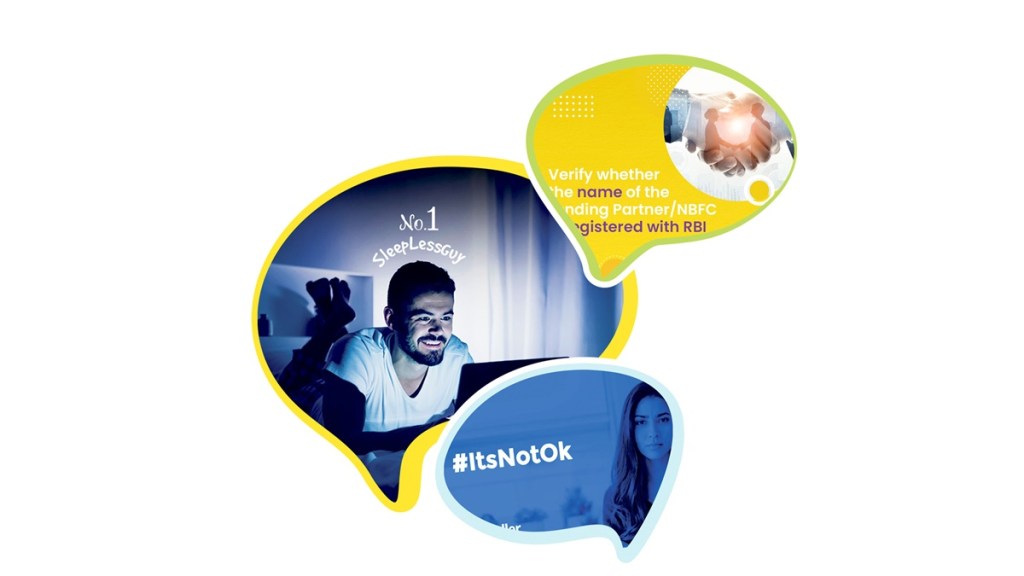Staying silent can be damaging to brands, particularly when it comes to issues such as online security, environment and climate change. Result? They have started looking at awareness campaigns in a new light. Though similar campaigns have been leveraged in the past as well, purpose-driven advertising are now more visible and sharp with the new generation of consumers more aware and more demanding of their brands.
At least a dozen brands have launched such campaigns in the past month alone, including WhatsApp’s Scam Se Bacho (Beware of scams) campaign, Radio City’s Piche Wale Babu Helmet Laga Lo (Pillion bike riders wear a helmet) campaign and Protinex’s The Protinex Protein Abhiyaan to address low protein intake among adults. To stand out in the flood of content online, some brands are using influencers to add credibility, while others are experimenting with the ad’s tonality to appeal to a wider audience set.
The whole point of such campaigns is to influence how people perceive a brand, improve customer loyalty, and even reduce customer acquisition costs over time. While there is no shortage of tools that can help one understand how well a campaign has performed in terms of engagement, search traffic, interaction and consideration, ultimately the effectiveness lies in action and not reactions, says Puneet Bajaj, vice-president of strategy, Kinnect. He highlights that the real return on investment (RoI) on awareness campaigns is long-term behavioural change.
Walking a tight rope
Experts say for such campaigns to work, marketers ought to highlight the company’s personality each time they run a new ad or post something new online. If the brand messaging is consistent, they will bring the target audience one step closer to making the right associations with the business.
Getting the right combination is not easy. Vishnu Srivatsav, national creative director, 22feet Tribal Worldwide, notes that some brands approach it like a mandate, as a box to tick rather than make a real impact. “It needs to be a compelling communication that can create real awareness. It also helps when brands include measures that address the problem and not just stick to communicating it,” he adds.
Having realised how harassment and stalking over phones had become a huge cause of concern for women worldwide over the years — be it texts, phone calls, or emails — Truecaller recently released a new edition of its #ItsNotOk campaign. Through the #CallItOut edition, the brand is trying to empower women to communicate and navigate the internet safely while positively impacting safety in the real world as well, said the company. It has leveraged social media platforms by conducting Instagram Lives and Twitter Spaces in regional languages with prominent representatives from the police and civil society “to catalyse nuanced conversations” on the subject.
Similarly, homegrown brand Paree is making efforts to initiate conversation and educate women on the importance of menstrual health. For #ChampionforChampions campaign, the brand has associated with women police officers — including, hold your breath, Kiran Bedi, the first woman in India to join the officer ranks of the Indian Police Service in 1972 — to add volume to the message of menstrual health prioritisation. Noting how at times brands go overboard while trying to educate audiences, Shruti Kapoor, senior marketing manager at Soothe Healthcare, says that there are certain issues that warrant high decibel conversation and education.
“What needs to be ensured is that the communication is created with the right intention and the brand presents a true picture with data-backed content as opposed to undertaking a one-time or gimmicky exercise. It is important for a brand to set the tonality, flow of information, and content of the campaign at the stage of inception and it should have expertise in the area for the campaign to be impactful,” she says.
To make their campaigns impactful and not appear preachy, brands frequently use humour for awareness ads. But that strategy is not easy to pull off with many brands appearing tone deaf rather than light-hearted.
Satish Kumar Malhotra, director, sales and marketing, Springfit, says that one needs to concentrate on a single message or goal while creating such awareness campaigns that are easy to engage with and relate to. For its campaign Ab to so jao (Now go to sleep) the brand took the route of humour, while urging people to spend their nights sleeping rather than browsing their phones, conversing or doing anything else.
“Don’t make the campaign brand-centric, instead make it consumer-centric,” he adds. Kinnect’s Bajaj says that humour, seriousness and analogies are all fine as long as one is not coming across as frivolous.
Satyam Kumar, CEO, LoanTap, says that for its recent public awareness campaign on fraudulent loans, the brand had broken the information into pointers that could be communicated via different scenarios. The brand collaborated with influencers from different genres to create compelling reels on the topic. “We have also identified relatable characters and situations to convey the message. And to make it shareable with friends and family, we kept the tone friendly, comforting and relatable,” he adds.
Last but not least, brands must walk the talk. When that does not happen, the brand itself will be seen as opportunistic and insincere.
No place for double-speak: The do’s and don’ts of awareness campaigns
Do’s
Know your target audience; it gives clarity and direction
Stay focused on your mission; give out a consistent message
Set meaningful goals, without which measuring success is difficult
Don’ts
Focusing only on brand and not the cause will undermine the whole exercise
Avoid flab; too many messages will confuse the target audience
Don’t forget to measure; not measuring or using the wrong metrics can lead you astray
(Courtesy: Pragya Misra Mehrishi, director of public affairs, Truecaller)
Also Read: Akasa Air launches new marketing campaign ‘it’s your sky’
